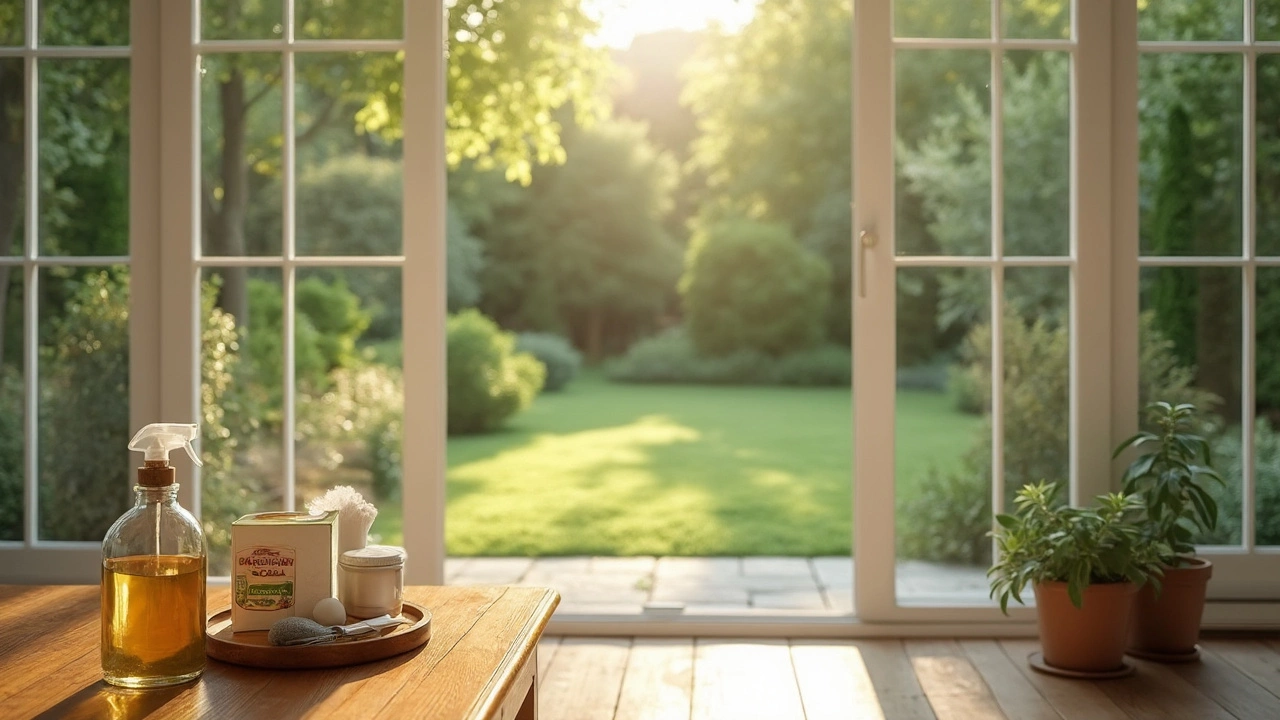Ever look through a window and think you're in a fog? It's like the glass has its own clouds floating by. This common problem usually comes down to the hard water stains, mineral deposits, or just plain old dirt build-up. But don't worry, getting rid of that cloudiness is easier than it seems.
The first step is understanding what's causing those stains. If it's hard water, you'll notice that minerals like calcium and magnesium love to leave their mark on your glass. Got some vinegar in the kitchen? Combine it with water, and you've got a simple cleaning solution that works wonders. Sprinkle a little baking soda too, and you're ready to tackle tougher stains.
- Understanding the Causes of Cloudiness
- DIY Solutions with Household Ingredients
- Professional Techniques and Tools
- Maintaining Clarity: Prevention Tips
Understanding the Causes of Cloudiness
So, let's dive into what makes a piece of clear glass go all foggy and dull. No, it's not magic or ghosts—it's usually something much more mundane. The cloudiness mostly comes from hard water, which is full of minerals like calcium and magnesium.
These minerals enjoy hanging out on your glass, creating stubborn stains. Maybe you've noticed this on a window or even your shower doors. It's especially common in areas with hard water supply, but it can happen anywhere. Another contributor could be soap scum, which seems to love gripping onto glass surfaces.
Environmental Grime
If you live in an urban area, pollution and airborne dirt can add to the cloudiness. Over time, the particles in the air settle on your windows, mixing with moisture to form a cloudy film. This isn't just unsightly; it also makes cleaning a more challenging task.
Residues from Cleaners
Ironically, sometimes the products we use to clean glass leave a residue that causes cloudiness. Certain commercial glass cleaners leave behind a film that doesn't quite do the trick. If you've ever cleaned and then found it still looked cloudy, this could be why.
Understanding these causes is the first step in tackling cloudy windows and ensuring your glass cleaning efforts are effective. Knowing what's behind the cloudiness means you can choose a cleaning method that actually works, not just smears things around.
DIY Solutions with Household Ingredients
Ready to tackle that glass cleaning project without a trip to the store? You probably have everything you need right in your kitchen. Simple household ingredients can work just as well, if not better, than pricey commercial cleaning products!
Vinegar: The Miracle Worker
White vinegar is a go-to for removing cloudiness and mineral deposits. You can create a powerful yet gentle cleaner by mixing equal parts of vinegar and water in a spray bottle. Just spray it on the glass, let it sit for a few minutes, then wipe it off with a dry microfiber cloth. It's amazing how quickly the shine returns!
"Vinegar is nature's great cleaner—it can tackle almost any household dilemma without harsh chemicals," says Emma Green, a sustainable living expert.
Baking Soda Boost
For tougher stains, sprinkle some baking soda directly on a damp sponge. Use circular motions to gently scrub the glass. This works particularly well for those stubborn spots that refuse to budge with just vinegar and water.
Dish Soap and Warm Water
If you're dealing with grease or oily residues, mix a couple of drops of dish soap into some warm water. It cuts through grime like a hot knife through butter. Just rinse the glass afterward to avoid soap film, and you'll have spotless windows in no time.
DIY Cleaning Formula
Trying to be even more eco-friendly? Make a multipurpose cleaner with a more complex blend:
- 1 cup of water
- 1 cup of vinegar
- 2 tablespoons of lemon juice
Lemon juice adds a fresh scent and helps break down any grime even faster. Consider this your ultimate window cleaning ally!

Professional Techniques and Tools
If you're dealing with stubborn cloudiness and looking for a more professional approach, it's time to bring out the big guns. Professionals often rely on specialized tools and products to achieve that pristine finish.
Best Tools for the Job
First things first, you'll need a good squeegee. This isn't just any old tool—an effective squeegee can make all the difference. Look for one with a quality rubber blade, as it helps remove excess water without leaving streaks. A microfiber cloth is another must-have; it's perfect for drying and polishing for a clear result.Professional Products
Sometimes your typical household mix isn't enough. In these cases, consider a commercial glass cleaner. These solutions often include ingredients specifically designed to target and break down mineral deposits and grime. Brands like Windex and Invisible Glass are popular choices that get the job done.Advanced Techniques
For those really stubborn deposits, a razor blade might be your friend. But this requires a careful approach. Hold the blade at a low angle and gently scrape in one direction to remove hardened grime. Just be cautious and ensure the glass is wet to avoid scratches.
Meanwhile, for window cleaning pros looking at minimizing effort, steam cleaning is another method to consider. The heat loosens up grime, making it much easier to wipe away. It’s a neat trick for large windows or those hard-to-reach places.
| Tool/Product | Purpose | Effectiveness |
|---|---|---|
| Squeegee | Water Removal | High |
| Microfiber Cloth | Drying and Polishing | High |
| Commercial Glass Cleaner | Stain Removal | Medium-High |
| Razor Blade | Hard Deposit Removal | High |
| Steam Cleaner | Grime Loosening | Medium-High |
Bringing that crystal clear view back to your glass is easier than you might think. With the right combination of tools and techniques, you'll not only remove cloudiness but give your windows a glow-up that’s both professional and satisfying. So go ahead, tackle that grime head-on!
Maintaining Clarity: Prevention Tips
Once you've battled through the cloudiness and your windows are back to their pristine glory, you'll want to keep them that way. Preventive measures can save you a lot of time and hassle in the long run. Let's dive into some practical tips to maintain your clear glass.
Regular Cleaning Routine
It might sound simple, but keeping up with a regular cleaning schedule is a game changer. Dust and dirt love to stick around, especially on glass. By giving your windows a wipe-down with a microfiber cloth and gentle cleaner every couple of weeks, you can keep them looking fresh. Remember, regular care prevents build-up!
Use Distilled Water
Tap water can leave mineral streaks, so using distilled water for cleaning your glass can reduce those stubborn spots. You'll be amazed at the difference this little switch can make, especially if you're in an area with hard water.
Invest in a Water Softener
If you're battling hard water stains, it might be worth installing a home water softener. This device reduces the mineral content in your water before it gets anywhere near your glass. That means fewer streaks and less hassle.
Squeegee the Right Way
Ever seen those professionals with their squeegees? That's not just for show. Using a squeegee properly can prevent water spots and streaks altogether. Start at the top and work your way down in a smooth, even motion. And say goodbye to cloudy glass.
| Regular Task | Recommended Frequency |
|---|---|
| Microfiber wipe-down | Every 2 weeks |
| Squeegee cleaning | Monthly |
| Deep clean | Quarterly |
So there you have it. A few simple tricks to keep your glass crystal clear, just as it should be. Stick with these prevention tips, and you can enjoy those beautiful, streak-free windows year-round.
